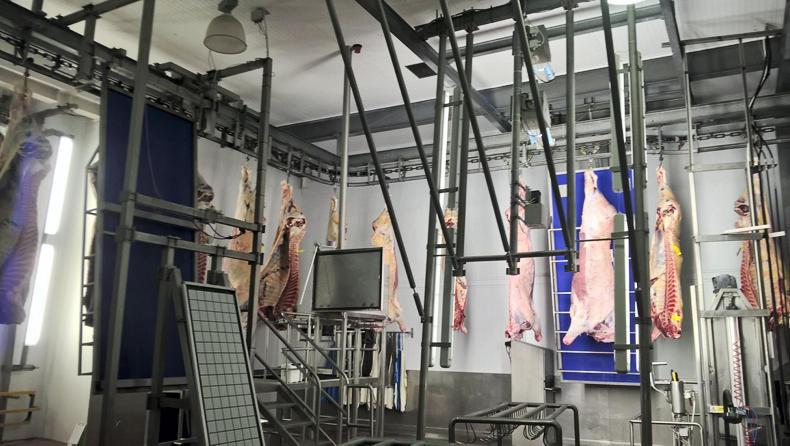The Department of Agriculture has published the results of the modification trial showing an improvement in the accuracy of both carcase conformation and fat cover by using LED lighting and a digital camera instead of fluorescent lighting and an analogue camera.
The trial on the grading machine was carried out in the Slaney Foods factory between May 2018 and March 2019.
The new-spec digital machine was added to the line along with the older analogue machine and a panel of classification experts from the Department had an inspection point after the cattle passed both machines.
How the machines work
Mechanical grading machines capture images of the carcase. These images are then assessed by a computer to calculate the carcase’s EUROP grid classification.
A machine has to prove it can match the EU standard of an average classification official by obtaining a score of 600 points out of a possible 1,000 or 60% for both fat and conformation accuracy.
The approval process involves classification experts independently judging the grade of carcases and comparing their results with those of the machine.
The aim of the trial was to ensure a replacement is available for the existing analogue-based equipment which is coming to the end of its life.
The Department facilitated the trial but will not be insisting on its use.
If factories decide to adopt the new equipment, the Department will carry out classification checks of the technology prior to the system going live.
The test
The machine provider is German company E+V, which supplies all the machines in factories across the island of Ireland.
They were given the grades of 2,431 cattle which were assessed manually by Irish classification experts from which they calibrated the machine with digital and LED technology.
The trial involved selecting 2,100 cattle and comparing the machine’s performance on the kill line with that of a panel of classification experts from DAFM. An independent validation was also conducted by Piet van de Lindeloof, who produced the report.
In assessing fat score, it was 85.7%
The existing machine with the old technology was found to have an accuracy of 84.1% for conformation.
In assessing fat score, it was 85.7%. With 60% required for approval, it comfortably met the standard.
When the experts compared their findings with the new machine, the performance on classification improved to 85.2%. On fat, the performance improved to 93.3%.
Machines operating in Irish factories are based on equations calculated in 2002
A third trial was conducted using the new technology along with two equations from an authorisation trial undertaken in 2014.
Machines operating in Irish factories are based on equations calculated in 2002. In 2014, a second authorisation trial was undertaken but the machines continue to operate with the 2002 results.
By using a combination of equations from the 2014 trial on conformation, the accuracy compared to the expert panel increased again to 90.3% for the entire 2,100 cattle sample.
Conclusion
The report concluded that upgrading to LED lighting and digital camera would improve the accuracy of the grading service provided by the machines that operate in factories.
However, a greater improvement still could be achieved by adopting conformation equations from the trial conducted in 2014 as well as the new technology.
By way of illustration, under the existing system, of the 2,100 cattle that were used in the modification trial, the experts agreed completely with the machine for 1,331 cattle, disagreed by one sub-class or one-third of a grade on 752 occasions and on 17 occasions they disagreed by two subclasses or two-thirds of a grade for conformation.
With LED lighting and digital camera plus equations from the 2014 trial, complete agreement increased to 1,620 cattle with disagreement by one subclass falling to 472 cattle and there were just eight cattle where a difference of two sub classes was found.
Comment
It was entirely predictable that digital cameras and LED lighting would be an improvement on analogue cameras and fluorescent lighting.
It is like comparing television pictures from the 1990s with today and given how many versions of the iPhone there have been since its introduction eleven years ago, an upgrade on grading machines is long overdue.






 This is a subscriber-only article
This is a subscriber-only article










SHARING OPTIONS: